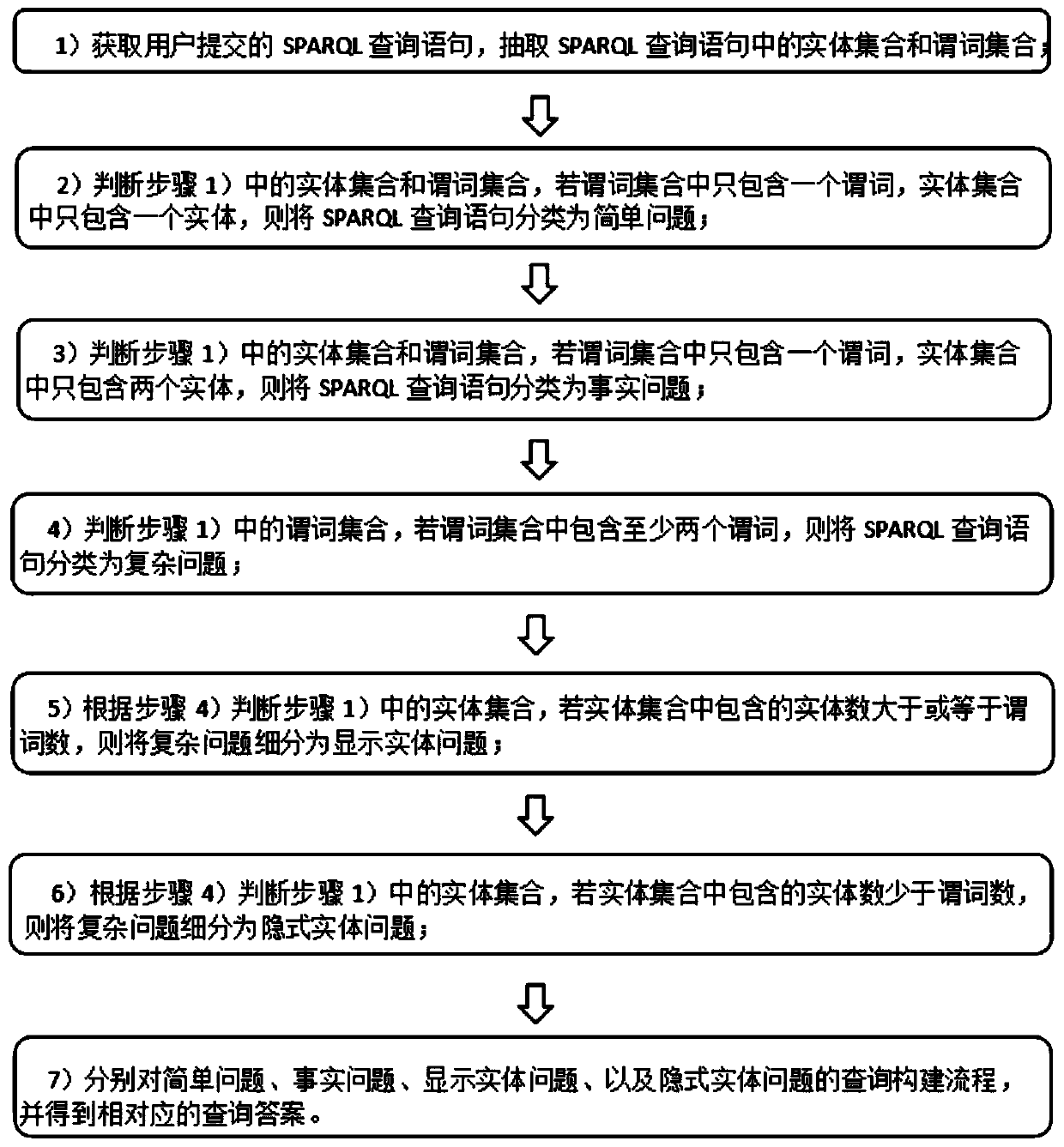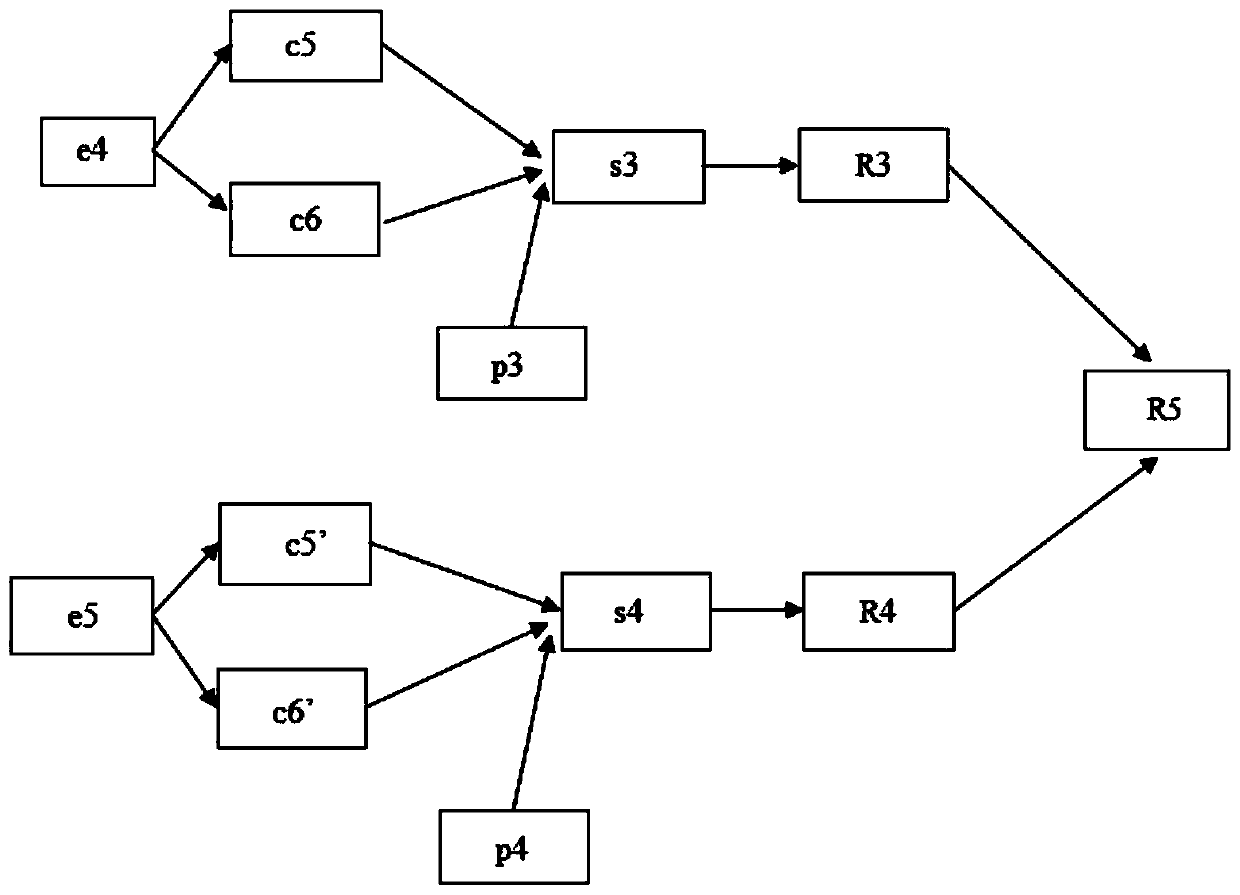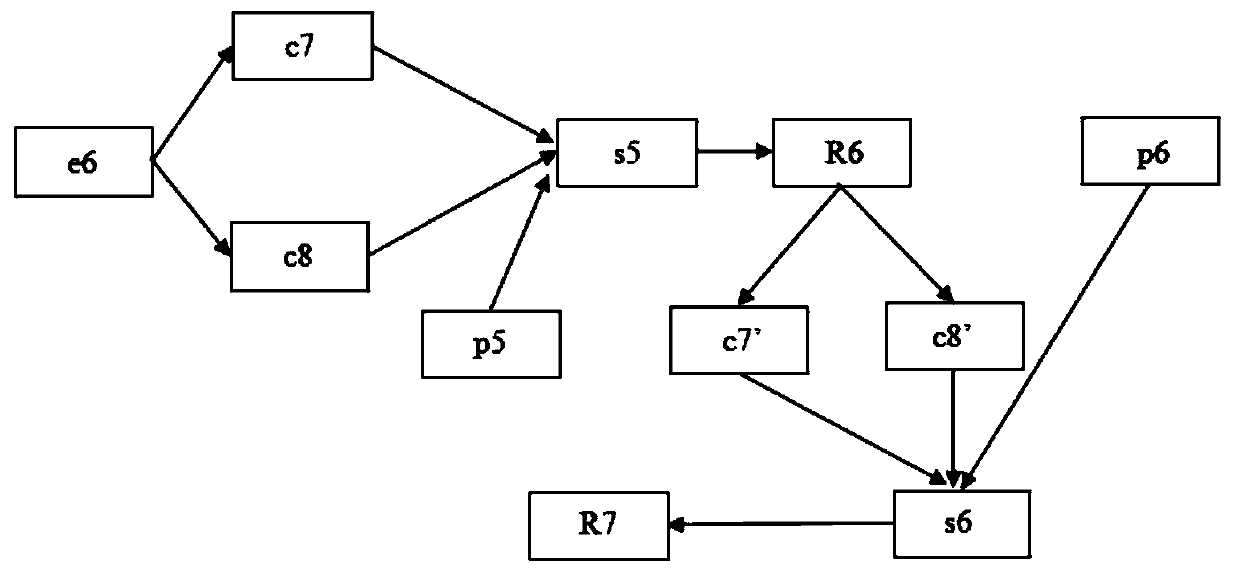Knowledge-driven SPARQL query construction method
A construction method and knowledge-driven technology, applied in the field of data query, can solve the problems of large storage space, long running time, and time-consuming, etc., and achieve the effects of reducing search space, accurate screening, and reducing running time
- Summary
- Abstract
- Description
- Claims
- Application Information
AI Technical Summary
Problems solved by technology
Method used
Image
Examples
Embodiment Construction
[0050] The present invention will be described in detail below in conjunction with the accompanying drawings and specific embodiments.
[0051] Such as figure 1 As shown, the present embodiment relates to a knowledge-driven SPARQL query construction method, and the main steps of the method are as follows:
[0052] 1) Obtain the SPARQL query statement submitted by the user, and extract the entity set and predicate set in the SPARQL query statement;
[0053] 2) Determine the entity set and predicate set in step 1), if only one predicate is included in the predicate set, and only one entity is included in the entity set, then the SPARQL query statement is classified as a simple question;
[0054] 3) Judging the entity set and predicate set in step 1), if only one predicate is included in the predicate set, and only two entities are included in the entity set, then the SPARQL query statement is classified as a factual problem;
[0055] 4) Judging the predicate set in step 1), if...
PUM
 Login to View More
Login to View More Abstract
Description
Claims
Application Information
 Login to View More
Login to View More - R&D
- Intellectual Property
- Life Sciences
- Materials
- Tech Scout
- Unparalleled Data Quality
- Higher Quality Content
- 60% Fewer Hallucinations
Browse by: Latest US Patents, China's latest patents, Technical Efficacy Thesaurus, Application Domain, Technology Topic, Popular Technical Reports.
© 2025 PatSnap. All rights reserved.Legal|Privacy policy|Modern Slavery Act Transparency Statement|Sitemap|About US| Contact US: help@patsnap.com



